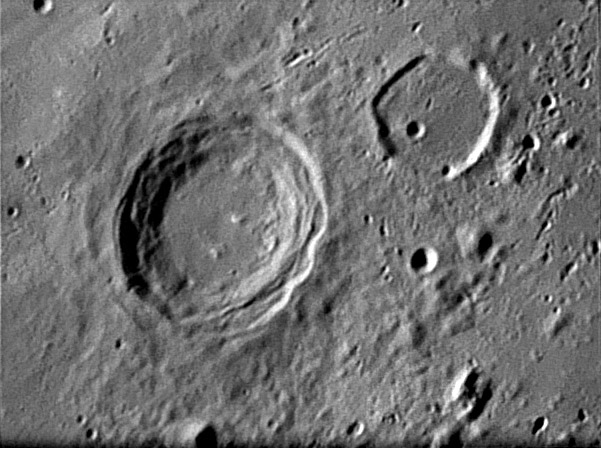
image by François Emond, Hautes-Alpes, FRANCE.
Although there have been about 1,200 LPODs, not every one of the 1,229 nearside named features has had its own page. The problem is that a handful of craters grab attention, so that every imager has their personal best Plato, Clavius, Copernicus, Gassendi, Tycho and Theophilus, all of which are submitted to LPOD. And I publish them when I can find something new to say - or am too awestruck to say much of anything. As a strike for fairness, today LPOD shows the interior of an often overlooked crater that has previously been depicted only under very Aristoteles, another crater lacking a significant peak, hints at a dip between its small peaks. Is this true for other complex craters with small, off-center peaks?
Technical Details:
06/08/07, 04h12 UT. Dobson T400 (16″) & barlow FFC + extension tubes. Webcam Vesta Pro N & B mode raw + red filter RG630. Processed with Iris.
Related Links:
Rükl plate 31
François’ website.
Yesterday's LPOD: Re-Map-Ing the Moon
Tomorrow's LPOD: Limb Gift
COMMENTS?
Register, Log in, and join in the comments.



